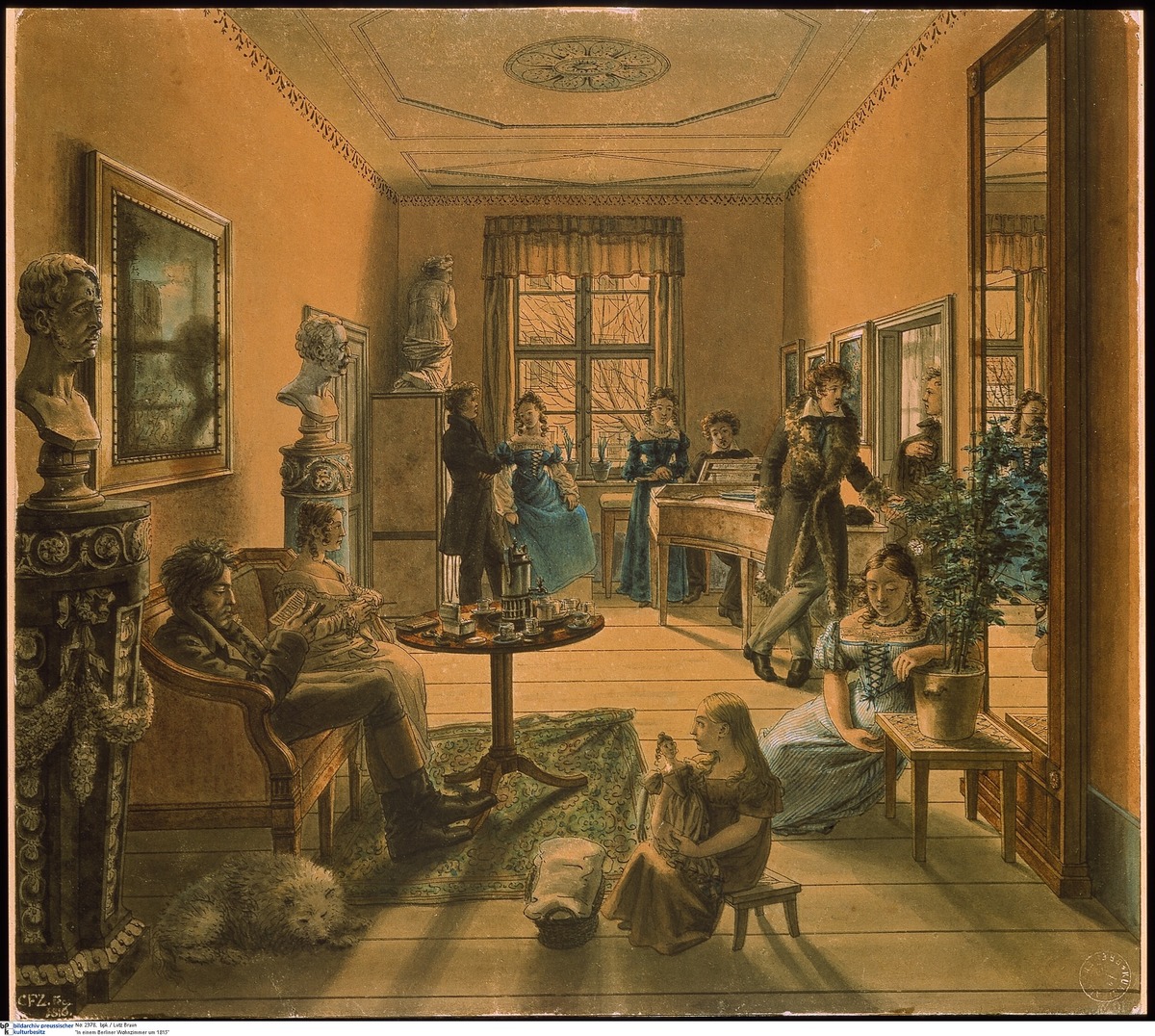Source

Source: Original: Bremen, Kunsthalle
In early nineteenth-century Germany, the tradition of classical antiquity and humanistic learning had a powerful hold on the collective imagination of the educated bourgeoisie. During the Enlightenment, classical ideals had been propounded by the influential scholar Johann Joachim Winckelmann (1717–1768), among others. Later, these same ideals were advanced by Wilhelm von Humboldt (1767–1835), the founder of the modern German university. Humboldt advocated a universal education based upon a thorough knowledge of Greek and Roman antiquity, especially classical literature. In the drawing below, the bourgeois occupants of a Berlin living room pursue several activities associated with “classical” culture: namely, reading, conversing, and playing music. Still, the clearest testimony to classicism’s influence is the art on display in this home. Two portrait busts mounted on highly ornamental bases and a reproduction of an antique statue assume prominent roles within an otherwise spare Biedermeier interior. Watercolor and pen-and-ink drawing by Carl Friedrich Zimmermann (1796–1820), 1816.

Source: Original: Bremen, Kunsthalle
© bpk / Lutz Braun